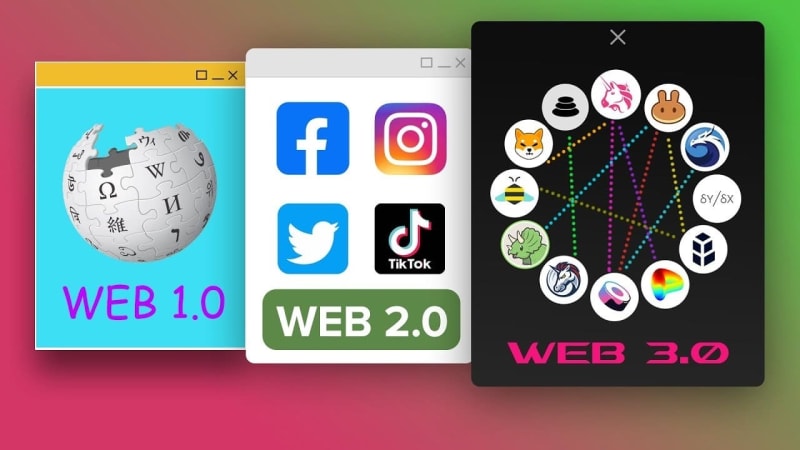Introduction
The internet has come a long way from its humble beginnings as Web1 to the social media-dominated Web2. But now, we stand at the brink of a new era, Web3, a concept that holds the potential to reshape the digital landscape as we know it. In this article, we will delve into the evolution of the internet, the shortcomings of Web1 and Web2, and how Web3 is poised to address these issues while ushering in a new era of user empowerment, decentralization, and true ownership.
Web1: The Static Web
Web1, the early internet, was a static realm where websites offered little more than digital pamphlets. It primarily served as a platform for information sharing. However, Web1 had significant limitations. Content was static, pages were read-only, and interactivity was limited. Users could consume information, but there was minimal engagement or collaboration.
Web2: The Social Web
With the advent of Web2, the internet transformed into a dynamic and interactive space. Social media platforms, user-generated content, and the rise of the platform economy became the hallmark of Web2. It brought people closer, enabled content creation, and fueled unprecedented digital innovation.
However, this transition came with its own set of problems. Centralization of power among tech giants led to concerns about privacy, data control, and surveillance. Content censorship and moderation became contentious issues, and users often lacked true ownership and control over their digital assets.
Problems in Web2
Centralization of Power: Tech giants like Facebook, Google, and Amazon amassed enormous influence, dictating the flow of information and shaping user experiences.
Data Privacy and Security: Frequent data breaches, concerns about surveillance, and the mishandling of personal information raised questions about user privacy and security.
Content Censorship: The centralized nature of Web2 platforms allowed them to moderate and censor content, often sparking debates about free expression.
Ownership and Control: Users rarely had true ownership or control over their data, digital assets, or online identities.
What is Web3?
Web3 represents the next phase of the internet, built on core principles of decentralization, blockchain technology, and user empowerment. It harnesses various technologies and concepts, including blockchain, smart contracts, and decentralized applications (dApps). In Web3, users gain unprecedented control over their data, digital assets, and online interactions.
Web3 vs. Web2: Key Differences
Decentralization vs. Centralization: Web3 decentralizes control, eliminating single points of power, while Web2 is characterized by centralization.
Ownership and Control: Web3 empowers users with true ownership of their digital assets, in stark contrast to Web2, where control often rests with platform providers.
Privacy and Security: Web3 enhances data security and user control, reducing the risks of data breaches and surveillance, unlike Web2's privacy concerns.
Interoperability and Openness: Web3 promotes interoperability, allowing diverse applications to work together seamlessly, while Web2 often restricts data and services.
Solving Web2 Problems with Web3
Web3 addresses the issues of Web2:
Decentralization: By eliminating central authorities, Web3 prevents the concentration of power and control in the hands of a few.
Ownership: Web3 enables true ownership of digital assets through blockchain technology, allowing users to control and transfer their assets.
Privacy: Through encryption and decentralized systems, Web3 enhances data security and returns control of personal information to users.
Censorship Resistance: Web3 promotes free expression and resists censorship through its decentralized nature, ensuring that no single entity can control content.
Use Cases and Applications
Web3 is not just theoretical; it has real-world applications:
NFTs: Non-fungible tokens (NFTs) are unique digital assets that users truly own, transforming the world of digital collectibles and art.
Decentralized Finance (DeFi): DeFi platforms offer financial services without intermediaries, providing users with greater control over their assets.
Decentralized Social Networks: Social media platforms on Web3 prioritize user control and privacy, ensuring that users own and manage their data.
Challenges and Future of Web3
Challenges facing Web3 adoption include scalability, regulatory hurdles, and the need for user-friendly interfaces. Nevertheless, the future holds great promise, with advancements in blockchain technology, decentralized governance, and user-centric innovations.
Conclusion
Web3 stands as a beacon of hope, offering solutions to the problems that have plagued Web1 and Web2. It empowers users with control, ownership, privacy, and censorship resistance. As Web3 technologies continue to evolve, we encourage readers to explore and embrace this exciting new era, taking an active role in shaping the future of the internet. It's time to embark on a journey towards a more decentralized and user-centric digital world.




Top comments (0)